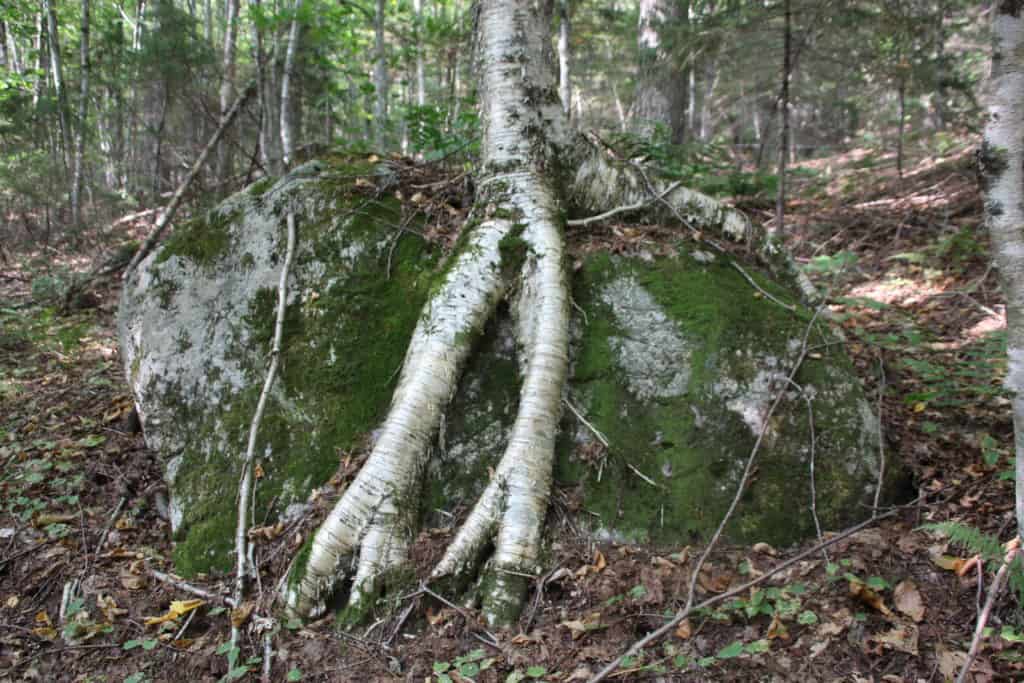
By Gary Salmon
So who put the rock underneath this yellow birch tree?
No one, but it is somewhat a characteristic of birches to occasionally get away with seeds landing and germinating on mossy logs, uprooted trees, rotten tree stumps, or even rocks or boulders.
The common thread here is that the seed must land on exposed mineral soil to germinate since the seeds are not capable of penetrating the leaf litter. The medium must also remain moist enough for continued growth after establishment. On top of this rock existed a small accumulation of soil available for germination and enough soil particles in rock cracks or down the sides for the tree roots to follow gravity and eventually reach the forest soil below.
Tenacity and luck are the keys here since the seed has no control over where the wind will blow it from its crown in the fall nor when the snow will cover it up to protect it from being eaten by birds and/or rodents.

Fires, heavy logging, and to some extent hurricanes have been the main contributors in creating our yellow and paper birch forests in New England. All were capable of creating both the exposed soils and available sunlight critical for these special trees.
Both birches also contribute to our fall landscape with their yellow foliage and either white or yellow bark. When mixed in with the orange and red crowns of grey-barked maples, the brown-leafed, elephant-legged beech, a few bronze-colored oak crowns, and purple-leaved ash, you have a New England mosaic suitable for Vermont’s foliage season. So wherever you’ve been leaf peeping, you are now empowered with the knowledge of which trees are providing most of our fall colors.
If you are very observant you might see this “tree on the rock” growing in plain sight with its maple and beech friends along the CCC road in Coolidge State Forest. An amazing feat.




